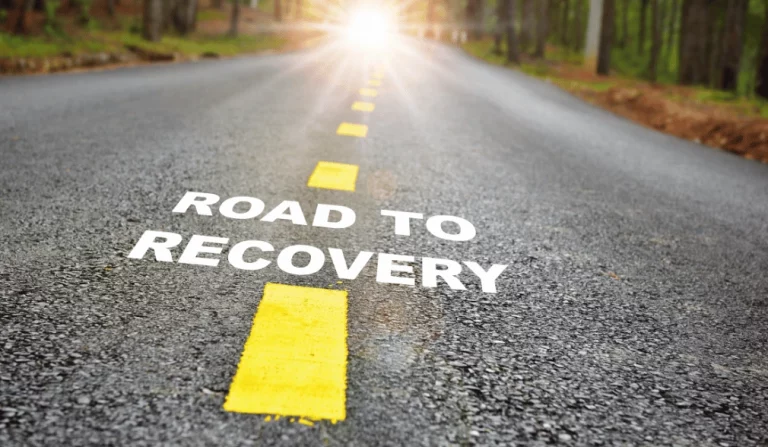
Codeine addiction treatment is a necessary part of recovery from dependency to the prescription drug codeine. Codeine is prescribed as a moderate pain reliever, sometimes in combination with paracetamol or ibuprofen, to treat pain that over-the-counter medications can’t alleviate. However, the accessibility of these codeine-containing medications, contributes to its longer-term addiction potential.
Understanding codeine addiction
While codeine is less potent than some other opioids, such as morphine, its accessibility makes it a subject of misuse. Codeine-based medications, including those combined with paracetamol or ibuprofen for enhanced pain relief, carry a significant risk of addiction if not used as prescribed.
Codeine phosphate and codeine linctus are two formulations of codeine commonly prescribed. Codeine phosphate is used for its analgesic properties to treat pain. Meanwhile, codeine linctus is a cough syrup aimed at relieving dry coughs. Both medications, due to their opioid nature, hold a serious potential for dependency and abuse. In particular, codeine linctus, due to its risk of causing respiratory problems. This is especially the case in children, and has led to stricter regulations around its prescription.
The abuse of codeine can lead to a false sense of security among users. Many don’t consider it as powerful or addictive as other opioids. This underestimation can lead to increased tolerance, dependence, and eventually, addiction. Individuals might start using codeine to cope with physical pain. Over time, they may turn to it for emotional pain as well, leading to a cycle of abuse.
Codeine manipulates the central nervous system to alter the user’s pain perception while inducing feelings of euphoria. When combined with paracetamol or ibuprofen, the effectiveness in pain relief enhances. However, so is the risk of addiction and other serious side effects. The misuse of medications combining paracetamol and codeine can lead to severe liver damage. Those that include ibuprofen can lead to gastrointestinal issues, among other adverse effects. Addiction further complicates cessation, with users often experiencing a psychological drive to continue consumption despite knowing the potential harms.
The dangers of long-term codeine use include:
- The risk of overdose, especially when mixed with other central nervous system depressants like alcohol or other opioids
- Drowsiness
- Confusion
- Nausea
- Respiratory depression
- Coma (in high doses)
Codeine addiction treatment
Codeine’s wide range of abuse stems from its euphoric effects and the misconception that its weaker strength means it’s not as addictive. This underestimation often leads users down a path of dependency and addiction. It is exacerbated by the drug’s accessibility and the body’s increasing tolerance over time.
Detoxification is a critical first step in addressing the physical aspects of codeine dependency. Medical detox can help manage severe withdrawal symptoms through medications like Buprenorphine or Methadone, which decrease cravings and ease the detox process. Suboxone, which contains Buprenorphine and Naloxone, is commonly used for opioid dependency recovery. This includes codeine, due to its effectiveness in reducing cravings without creating a new dependency.
Post-detox treatment typically involves a combination of residential treatment, medication-assisted treatment, outpatient treatment, and behavioural therapy. Inpatient treatment centres offer a change of environment that can significantly increase the chances of recovery. They do so by providing a structured and supportive setting away from triggers and access to the drug.
Behavioural therapies, particularly Cognitive Behavioral Therapy (CBT), are essential parts of codeine addiction treatment. They are key in addressing the psychological aspects of addiction. CBT helps patients identify and modify negative thought patterns and behaviours associated with drug use, aiming to reduce the risk of relapse.
Why should you consider codeine addiction treatment abroad?
Considering treatment abroad for addiction offers several benefits. One of the primary advantages is the complete removal from triggers present in your daily environment, creating a more focused and undistracted recovery process. Rehab facilities in countries like Spain offer high-quality, evidence-based treatments and amenities with longer treatment periods which lead to stronger recovery outcomes.
Moreover, international rehab centres such as InnerLife Recovery near Marbella maintain high standards of care, comparable or sometimes superior to local options, partly because they cater to a global clientele and must adhere to internationally recognised standards. English-speaking staff and medical professionals ensure clear communication, minimising the potential for misunderstandings due to language barriers. The seclusion from familiar environments can protect patient privacy, providing a discrete setting to work through recovery without the immediate risk of stigmatisation or jeopardising one’s social or professional standing.
Holistic approaches incorporate wellness programs into the treatment, offering activities like art therapy, meditation, and yoga alongside traditional therapies. This approach enhances overall well-being and mental resilience. Additionally, the opportunity for cultural immersion and the experience of new places can offer fresh perspectives and contribute positively to the recovery journey.
What to look for in a treatment centre abroad
When looking for a treatment centre abroad, there are several key factors to consider to ensure that the facility can meet your specific recovery needs while providing a comfortable and conducive environment for healing.
Specialised treatments and co-occurring conditions
Ensure the treatment centre offers specialised programs for your specific addiction type, whether it’s substance or behavioural addictions, and can treat co-occurring mental health conditions. This holistic approach to treatment is crucial for comprehensive recovery.
Language and cultural considerations
Consider the language spoken at the facility and the cultural context. Many international rehab facilities, including InnerLife Recovery, cater to English-speaking clients and employ staff who are fluent in English, minimising language barriers and cultural misunderstandings.
Cost and value for money
Treatment abroad can be more cost-effective compared to local options, without compromising the quality of care. Countries with a lower cost of living such as Spain, can offer luxury amenities and high-quality treatment at a fraction of the price of similar facilities in the US or UK.
Amenities and environment
Look for centres that provide a comfortable and healing environment, with amenities that can aid in your recovery process. Facilities like InnerLife Recovery offer luxurious accommodations, mindfulness and meditation exercises, art therapy, and cultural excursions, providing a holistic healing experience.
Personalised care and aftercare support
Choose a centre that offers personalised treatment plans tailored to your needs and provides comprehensive aftercare support to help you maintain sobriety after returning home. This may include online support groups, counselling, and follow-up care.
By taking these factors into account, you can find a treatment centre abroad that not only meets your recovery needs but also provides a nurturing environment that supports your journey to sobriety.






